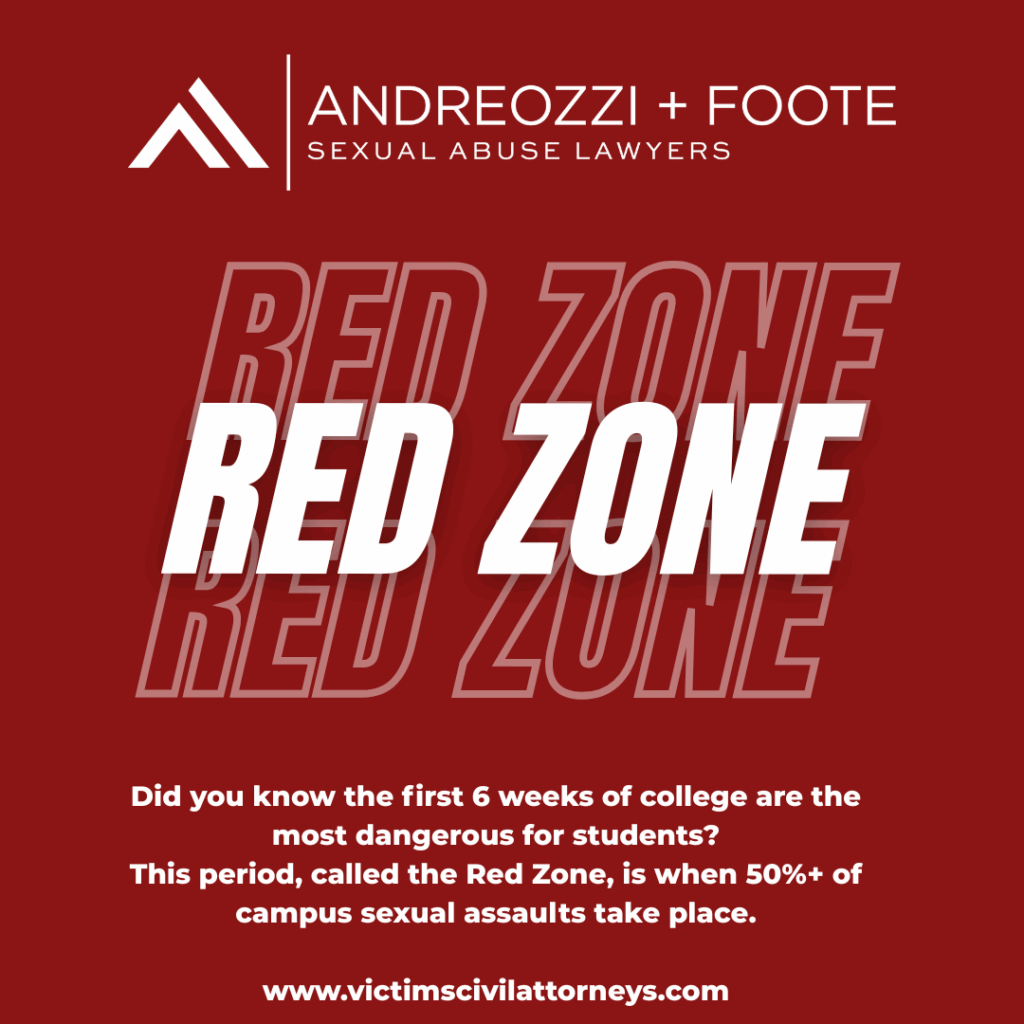What Colleges, Students, and Families Should Do
What is the Red Zone?
The Red Zone is the high-risk period from move-in through Thanksgiving when reports of sexual assault on U.S. campuses surge. It is estimated that more than half of campus sexual assaults occur in August, September, October, or November.
Risk isn’t evenly distributed. The 2019 AAU Campus Climate Survey (181,752 respondents across 33 universities) found that 13% of students reported non-consensual sexual contact since enrolling. Rates were higher among undergraduate women and queer students. This emphasized that incoming first-year undergrads are especially vulnerable. It underscores the need to concentrate prevention and education at the start of the year.
Why does risk rise in the fall?
- New environments & social norms: Early-semester parties, alcohol use, and unfamiliar spaces (including fraternity/sorority houses) create opportunities for coercion and isolation. These settings are part of what many schools formally recognize as their “education program or activity.”
- Unknown Boundaries: Young people do not often know their own limitations and boundaries around alcohol, sex and substances
- Information gaps: First-year students may not yet know campus policies, reporting options, or where to find confidential support. AAU’s data show students who experience harm are less confident that officials will take reports seriously.
What colleges and universities are required to do
Two federal frameworks set the floor for campus obligations: Title IX and the Clery Act
Title IX
As of January 9, 2025, a federal court vacated the 2024 Title IX regulations. Consequently, the 2020 Title IX regulations are back in effect nationwide. That means schools must, among other things:
- Offer free supportive measures to complainants, whether or not a formal complaint is filed (e.g., no-contact measures, housing, or class adjustments).
- Provide a fair grievance process; at postsecondary institutions, this includes a live hearing with cross-examination by party advisors (not the parties themselves), equal access to evidence, and a written outcome with appeal rights.
- Designate and publicly list a Title IX Coordinator and explain how to report.
Clery Act / VAWA (Campus SaVE)
Institutions must:
- Publish an Annual Security Report (ASR) by Oct. 1 with three years of crime statistics and clear policies, including survivors’ rights and options.
- Run primary prevention and awareness programs for all incoming students and employees. They should also have ongoing campaigns on dating violence, domestic violence, sexual assault, and stalking.
- Describe disciplinary procedures and protective measures; issue timely warnings for certain threats; and maintain transparent reporting channels.
Bottom line: Colleges are obligated to educate, prevent, support, and respond proactively and transparently especially during the Red Zone.
What can students do right now?
- Know your campus map for help. Save your Title IX Coordinator’s contact info and the local advocacy center number in your phone. Also, learn how to request supportive measures without filing a formal complaint.
- Use buddy & bystander plans. Agree on check-ins, exit phrases, and how to intervene safely for others
- Watch isolation tactics & coercion. If someone pressures you, changes the plan to a private space, or controls your transportation/phone, those are red flags. RAINN’s student resources outline practical safety steps.
- Know what consent is and get it continuously. Too often, the responsibility falls to the victim to protect themselves. More importantly, young people need to understand consent and when it can be given.
- Know off-campus counts. Many fraternity/sorority houses and recognized student-organization spaces fall under the school’s “program or activity.” You can report conduct that occurs there to Title IX.
If something happens: options and rights
- Immediate care & evidence: Consider medical care and a forensic (SANE) exam to address injuries, STIs, and evidence collection. This is important whether or not you choose to report.
- Supportive measures (no report required): Ask the Title IX office for safety and academic supports. This includes schedule changes, housing moves, and no-contact directives.
- Reporting choices: You can (a) tell the Title IX office, (b) report to police, (c) do both, or (d) do neither right now. You control if/when to file a formal complaint with the school.
- During a school process: Equal access to evidence, advisor of choice, live hearing at colleges, written determination, and appeal. No retaliation is permitted.
- Confidential help, 24/7: RAINN Hotline 800-656-HOPE (4673) and online chat provide confidential support and referrals.
What colleges should be doing during the Red Zone
- Launch mandatory orientation modules covering consent, reporting, supportive measures, and how to access confidential advocacy.
- Run bystander-intervention and risk-reduction education throughout the fall, not just once, and measure participation.
- Train RAs, Orientation Leaders and Athletic Staff on how to respond and how to connect students to supportive measures immediately.
- Audit Greek life and other high-density social spaces for staffing, security, lighting, transportation, and clear no-contact enforcement.
- Offer peer-led spaces where students can come into conversations around hard subjects
- Publish plain-language flowcharts for reporting, supportive measures, and timelines in the ASR and on web pages.
Our commitment at Andreozzi + Foote
When campuses fail to educate, protect, and respond, especially in the Red Zone, students pay the price. If you or someone you love was harmed, Andreozzi + Foote provides trauma-informed, survivor-centered representation. We hold colleges, athletic departments, Greek organizations, and youth-serving institutions accountable in civil court. Furthermore, we coordinate with your support team to protect your education and safety.
Free, confidential consultation. We’ll listen, explain your options, and fight beside you.


